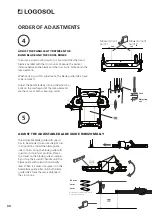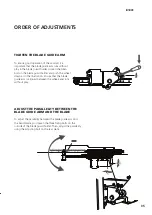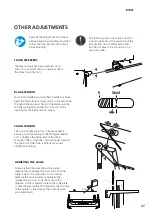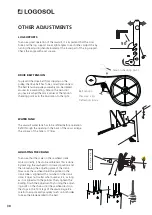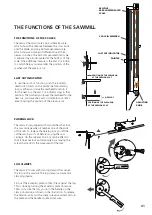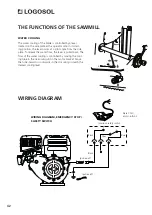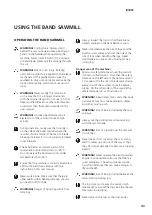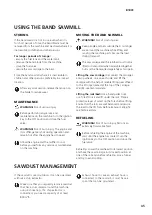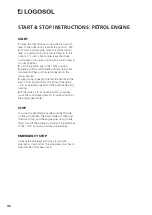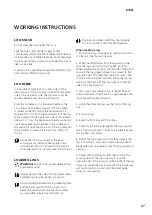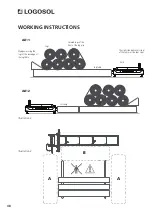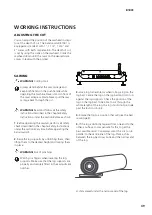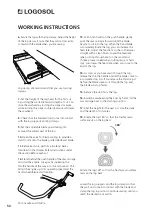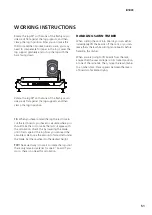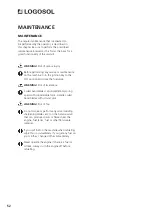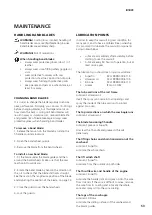
47
B1001
WORKING INSTRUCTIONS
LOG STACK
Do not stack the logs higher than 1 m.
Logs that are soiled, sandy, muddy or dirty
considerably shorten the life of the band blade and
increase the risk of blade breakage. Avoid dragging
the logs over the ground and try to keep the logs as
clean as possible.
It can also be a good idea to separate different sorts
of wood into different log stacks.
LOG TABLE
It is possible to load logs from both sides of the
band sawmill. If the log stack is placed on the same
side as the operator’s side, the log stack must be
secured before every occasion of sawing.
Build the log table so it is the same height as the
cross bunks on the band sawmill. If the log table
is placed on the left side of the band sawmill, it
should end 10 cm from the band sawmill. If the log
table is placed on the operator’s side, it should end
approx. 1 m from the band sawmill and you should
use a removable ramp between the log table and
the sawmill. Ensure that the rear of the log table has
large wedges to prevent the logs from rolling off
from it.
Ensure that the logs closest to the band
sawmill are secured with heavy-duty straps
so that they can not roll towards the sawmill
while the sawmill is running. [
See illustration 2
]
LOADING LOGS
WARNING!
Risk of crush injuries between log
and band sawmill.
Always stand at the side of the log table when
handling logs [
see illustration 3, area A
]
Avoid standing between the log table/log stack
and the band sawmill. The log stack must
always be secured with reliable straps when
you are within area B [
see illustration 3
].
The logs should be rolled from the log table.
Do not drop them onto the band sawmill.
When loading a log:
1. Position the saw carriage at its rearmost position
on the rails (the ’home’ position).
2. When loading the log from the operator’s side,
raise the log supports to their highest position.
When loading the log from the left side of the band
sawmill, the log supports have to be moved to the
opposite side of the bed (the operator’s side). Then,
fit them in their highest position. When the log lies
stably on the bed, refit the log supports to the left
side of the band sawmill.
3. If you use a removable ramp, it should be built
and positioned so that there is no gap between the
log table and the band sawmill.
4. Untie the straps that secure the front of the log
pile.
5. Roll out a log.
6. Retie the front logs with the straps.
7. Carefully roll the log up against the log supports.
Use a log turner/rotator. Centre the log laterally over
the log bed cross bunks.
8. Adjust the log supports so that they support the
log, but will not come into contact with the band
blade when you are sawing. Lock the log supports in
position.
9. Adjust the log clamps so that they come in the
same position as the log supports, but on the
opposite side of the log. Adjust the height of the log
clamps to secure the log. Ensure that the log clamps
will not come into contact with the band blade
when you are sawing.


